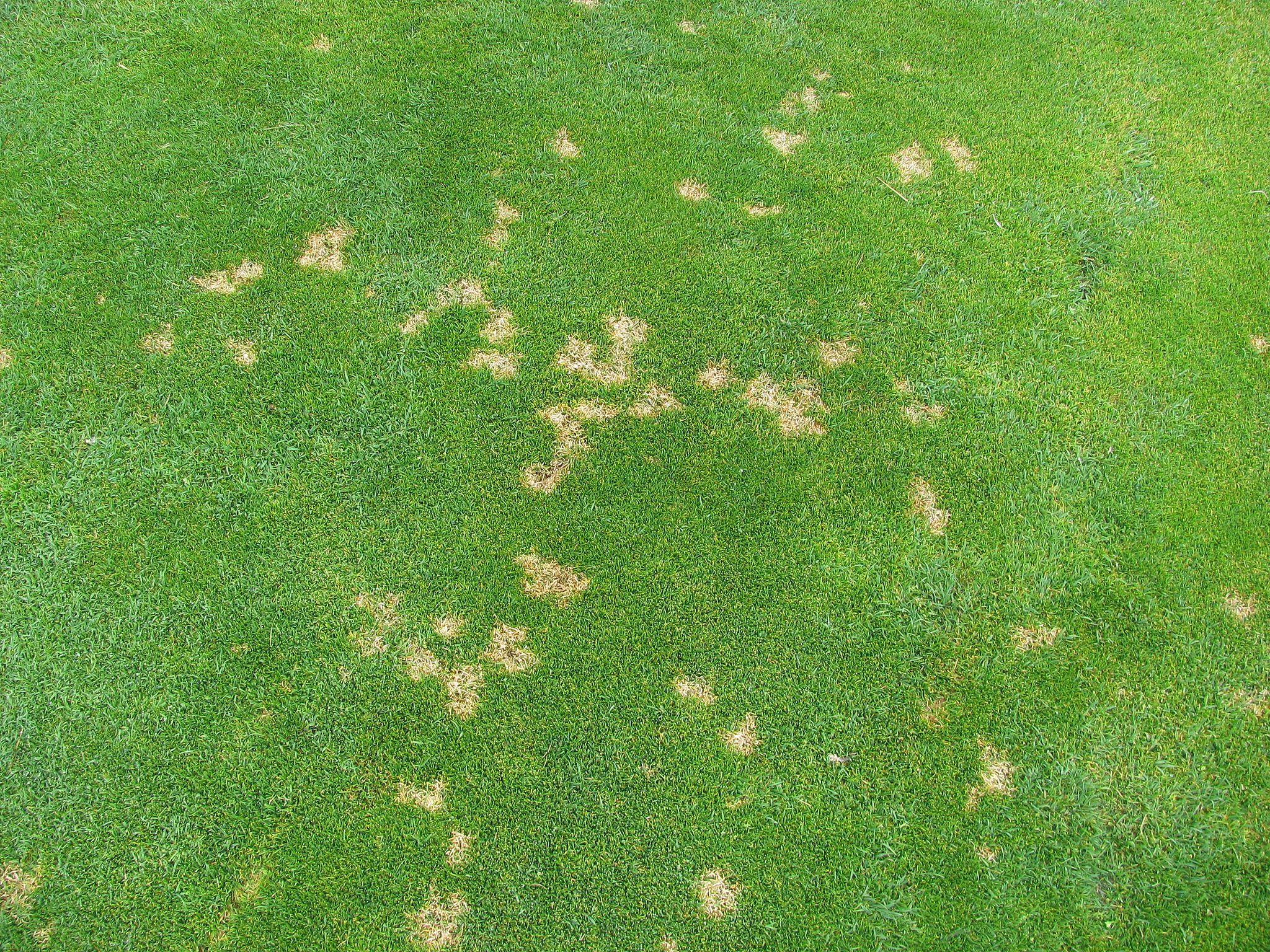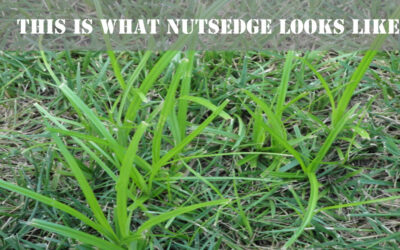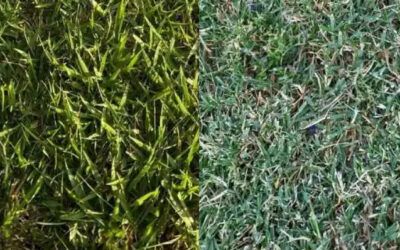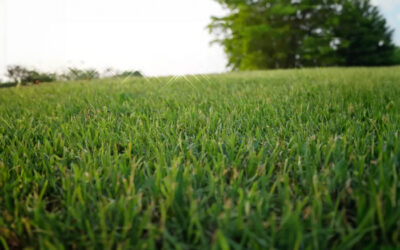What does Dollar Spot Fungus Look Like?
Dollar spot fungus forms in small, round, sunken patches that turn either straw color or white in the middle. These patches are usually about the size of a silver dollar, hence the name Dollar Spot Fungus. This fungus affects almost all types of grass, whether you have a warm season or a cool season grass. Often with the early morning due you can see a white fuzzy substance, almost like a spider web over the patch.
When does Dollar Spot Fungus Grow?
Dollar Spot Fungus appears from late spring to late fall, when the grass is especially green for warm season grasses. However, the fungus begins to grow and infect the grass even before the warmer weather begins. This fungus favors high humidity and temperatures ranging from 60 degrees to 85 degrees. This fungus begins to grow when it is super humid and night temperatures begin to reach above 50 degrees. The grass needs to be wet for at least 10-12 hours continuously to develop this fungus. So wet springs that create heavy dews through relatively cool nights are especially facilitative to this fungus. This fungus will generally begin to fade once temperatures exceed 90 degrees consistently.
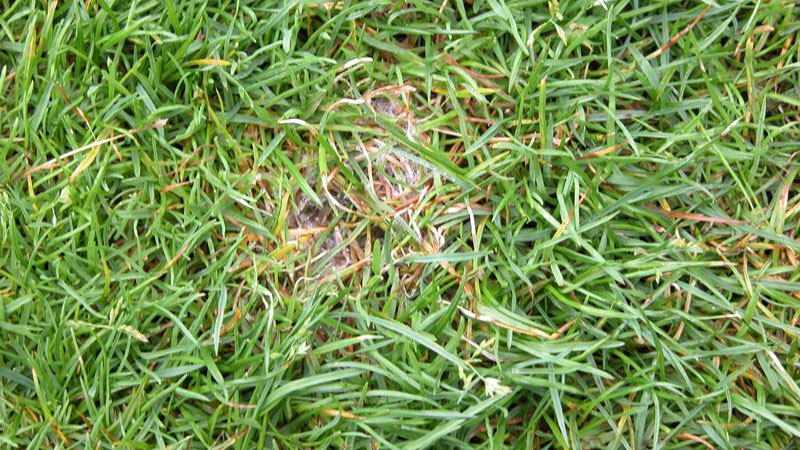
What causes Dollar Spot Fungus?
Excess moisture is the biggest reason for dollar spot fungus. Continuous heavy rainfalls in early spring are the main reason for dollar spot fungus later in the year. However, homeowner’s lawn care habits can also facilitate this fungus regardless of the weather. Over-watering the lawn or watering late in the day can have a huge effect on whether dollar spot fungus appears in late spring. Cutting the grass too low can also cause dollar spots.
What can I do to Prevent it?
Instead of watering multiple times a week for little bits at a time, you could instead water infrequently but deeper. Learn to water based on what the grass needs, not on what your calendar says. This needs to be done in the early morning so that the grass leaves don’t stay wet for too long. You can also cut your grass at its recommended height.
How do I get rid of it?
Unfortunately, sometimes, no matter how cautious you are, the weather causes dollar spot fungus to take over your lawn. When this happens, we can help. Nitrogen based fertilizers are key to helping the lawn recover from this fungus. We apply fertilizer throughout the summer, and we can even do it in between services if the fungus is particularly prevalent.
Get a quote for our fungicide treatment by filling out the form below and specifying fungicide.

